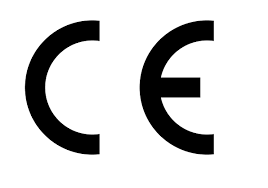Equine sinus trephination is a medical procedure commonly performed by veterinarians to treat sinus diseases in horses. This procedure is often necessary when a horse suffers from persistent sinus infections that do not respond to conventional treatment methods. In this blog post, we will explore what equine sinus trephination is, why it is needed, and what horse owners need to know about this procedure.
Understanding Equine Sinus Trephination
Equine sinus trephination is a surgical procedure that involves creating a small hole in the bone of the horse’s skull to access the sinuses. This procedure is performed to drain infected material, relieve pressure, or allow for the flushing and examination of the sinus cavities.
The sinuses in a horse's head are air-filled spaces located within the bones of the skull. These sinuses are lined with mucous membranes and are connected to the nasal passages. They play a critical role in the respiratory health of the horse, as they help to humidify and filter the air that is breathed in.
The Anatomy of Equine Sinuses
Horses have six pairs of sinuses:
- Frontal Sinuses: Located in the upper part of the forehead.
- Maxillary Sinuses: The largest sinuses located below the eyes.
- Dorsal Conchal Sinuses: Located at the front of the nasal passage.
- Ventral Conchal Sinuses: Situated beneath the dorsal conchal sinuses.
- Sphenopalatine Sinuses: Located deeper within the skull, behind the eyes.
- Ethmoidal Sinuses: Found in the area between the eyes.
Common Equine Sinus Problems
Sinus issues in horses can arise from various causes, including dental problems, respiratory infections, trauma, and tumors. These conditions can lead to sinusitis, an inflammation of the sinus cavities that can cause significant discomfort and health issues for the horse. Some common symptoms of sinusitis in horses include:
- Nasal discharge (often foul-smelling and from one nostril)
- Facial swelling
- Bad breath
- Difficulty breathing
- Head shaking
- Reduced performance in physical activities
When these symptoms are present, and standard treatments such as antibiotics or dental care do not resolve the issue, sinus trephination may be necessary to alleviate the condition.
When is Equine Sinus Trephination Needed?
Equine sinus trephination is typically needed in cases where the sinus disease has progressed to a point where non-surgical treatments are ineffective. The decision to perform sinus trephination is made by a veterinarian based on the horse's symptoms, diagnostic imaging, and overall health.
Conditions Requiring Sinus Trephination
-
Chronic Sinusitis: When sinusitis does not resolve with medication and recurs frequently, sinus trephination may be required to drain accumulated pus and allow for thorough cleaning of the sinus cavities.
-
Sinus Cysts: These fluid-filled sacs can develop in the sinuses and cause obstruction. Removing or draining the cyst via trephination can alleviate symptoms.
-
Dental-Related Sinusitis: Infections or abscesses in the upper teeth can extend into the sinuses, necessitating trephination to clear the infection.
-
Sinus Tumors: Benign or malignant tumors in the sinuses may need to be removed surgically, often requiring access through trephination.
-
Trauma: Injuries to the horse's head can cause fractures or damage to the sinuses. In some cases, sinus trephination is needed to repair the damage and prevent infection.
-
Foreign Bodies: Sometimes, foreign objects such as plant material can become lodged in the sinuses, leading to infection. Trephination allows for the removal of these objects.
The Procedure: What to Expect
Pre-Surgical Assessment
Before the procedure, the veterinarian will perform a thorough examination of the horse, including diagnostic imaging such as X-rays or CT scans to locate the exact area of the problem. Blood tests may also be conducted to ensure the horse is healthy enough for surgery.
Performing Sinus Trephination
Step-by-Step Process:
-
Sedation: The horse is usually sedated to keep it calm and still during the procedure. Local anesthesia is also applied to numb the area where the trephine will be used.
-
Preparation: The area of the skull where the trephine hole will be made is shaved and disinfected.
-
Trephination: A trephine, which is a circular saw-like instrument, is used to create a small hole in the skull bone. The size and location of the hole depend on which sinus cavity needs to be accessed.
-
Drainage and Flushing: Once the hole is made, the veterinarian can drain pus, remove cysts, or flush the sinus cavities with sterile solutions to remove debris and infection.
-
Inspection: A fiber-optic scope may be used to visually inspect the sinuses for any remaining infection or abnormal tissue.
-
Closure: Depending on the extent of the procedure, the hole may be left open to allow continued drainage, or it may be covered with a sterile dressing.
Post-Surgical Care
After the procedure, the horse will need careful monitoring and aftercare to ensure a full recovery. The veterinarian may prescribe antibiotics to prevent infection and pain relievers to manage discomfort. The horse should be kept in a clean, dry environment to reduce the risk of complications.
Post-Trephination Care Tips:
- Keep the trephination site clean and dry.
- Monitor the horse for signs of infection, such as increased swelling, redness, or discharge from the site.
- Follow the veterinarian's instructions for administering medications.
- Gradually reintroduce the horse to normal activities as advised by the veterinarian.
Risks and Complications
While equine sinus trephination is generally safe, there are some risks associated with the procedure. Potential complications can include:
- Infection: Despite preventive measures, there is a risk of infection at the trephination site.
- Bleeding: Some bleeding is normal, but excessive bleeding can occur, especially if blood vessels are damaged during the procedure.
- Fractures: In rare cases, the bone around the trephination site may fracture, particularly if the bone is weakened by disease.
- Sinus Recurrence: There is a possibility that the sinus issue may recur, necessitating further treatment.
Advantages of Sinus Trephination
Despite the risks, equine sinus trephination has several advantages that make it a valuable procedure for treating sinus issues in horses:
- Effective Drainage: Trephination provides a direct route for draining accumulated pus and debris, offering relief from symptoms.
- Accurate Diagnosis: The procedure allows for a thorough examination of the sinuses, helping to diagnose the underlying cause of the problem.
- Improved Recovery: By addressing the root cause of the sinus issue, trephination can lead to faster and more complete recovery.
When to Consult a Veterinarian
If your horse exhibits symptoms of sinusitis or any other sinus-related issues, it is crucial to consult a veterinarian as soon as possible. Early diagnosis and treatment can prevent the condition from worsening and reduce the need for more invasive procedures like trephination.
Signs That Require Immediate Attention:
- Persistent nasal discharge that is foul-smelling or contains blood
- Swelling or deformity of the face
- Difficulty breathing or snoring noises
- Weight loss or decreased appetite
- Lethargy or reluctance to exercise
Final Thoughts
Equine sinus trephination is a specialized procedure that can be lifesaving for horses suffering from severe sinus diseases. While it may sound intimidating, the procedure is often the best option for horses with chronic or complicated sinus issues. Understanding the process, knowing when it is needed, and following proper post-operative care can make a significant difference in the health and well-being of your horse.
For horse owners, staying informed about your horse's health and seeking timely veterinary care are the best ways to ensure that your horse remains healthy and active. If you suspect your horse may have a sinus problem, don't hesitate to consult your veterinarian to discuss the possibility of sinus trephination.






